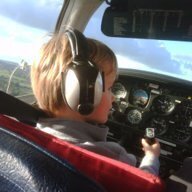We will have to disagree, Nev.. I wasn't making a joke, I was making a point in an attempt at being non-offensive and not having a public spat on a public forum. People are being castigated for using internationally designated OFFICIAL aviation codes/abbreviations because it will put off those new to aviation. Anyone new to aviation and coming to this (or any other aviation forum) would reasonably expect aviation abbreviations and jargon to be used and I would hazard to guess, not be too put off by it (unless it was an over-exuberant use); and would happily google it. I have to admit, I get a little annoyed when people use them and I don't know what they are, but a quick google sorts it out.
But using a colloquial abbreviation in a context to describe the properties of a landing area - by referring to the type of aircraft it can accomodate rather than saying short field or even spelling out the word ultrlight, and new people to "recreational flying" let alone aviation are supposed to somehow, by osmiosis, I suspect, work out what it is - and that is OK and defensible. Sorry, squire it is called hypocrisy by any other term. You either require people to use spell out all but the most common and easily decipherable codes/abbreviations etc so newbies aren't forever googling - and in the U/L case with no real prospect of working out what you mean - or don't castigate people for using them.. simples.
I don't even get your point about the AUF.. Recreational flying may mean light sport aircraft or what we in the UK refer to as permit aircraft... but the term recreational virtually everywhere else in the English speaking world refers to private flying - and includes general aviation.. I honestly had no idea what you meant by U/L in the context of landing areas.. and google was of no assistsance, either.. Maybe in the context of diuscussing different types of aircraft, I could work it out.
I would go so far as to say, after this spat, that the issue with using ICAO airfield codes is not because it would put newbies off, after all, newbies to any forum of a particular subject would expect OFFICIAL codes/abbreviation and possibly jargon to be used and be prepared to look it up - I think it more has to do with people not wanting to look things up and expecting others to spell it out for them to make their lives easier..
Frankly, this issue is tiny.. if I don't understand anything or know anything, I look it up and if Mr. Google can't give me anything, then I ask - as happened with SIS (and no one complained about its use).
[edits to correct typos - though I did invent a new word for a minute - abbreaviation... ]




